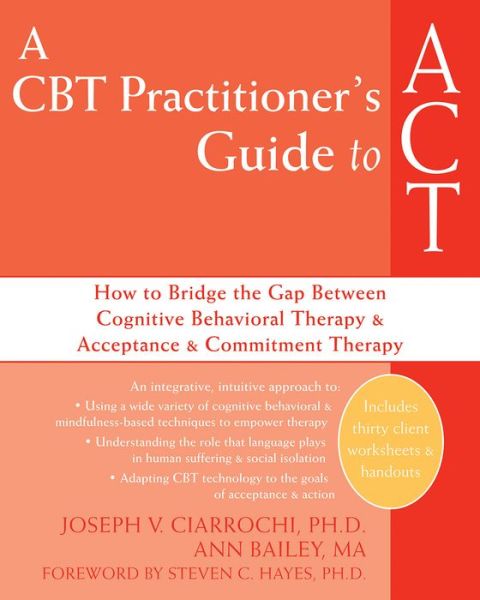A CBT Practitioner's Guide to ACT: How to Bridge the Gap Between Cognitive Behavioral Therapy and Acceptance and Commitment Therapy epub
Par flores joe le mardi, septembre 6 2016, 07:36 - Lien permanent
A CBT Practitioner's Guide to ACT: How to Bridge the Gap Between Cognitive Behavioral Therapy and Acceptance and Commitment Therapy by Joseph Ciarrochi, Ann Bailey


A CBT Practitioner's Guide to ACT: How to Bridge the Gap Between Cognitive Behavioral Therapy and Acceptance and Commitment Therapy book
A CBT Practitioner's Guide to ACT: How to Bridge the Gap Between Cognitive Behavioral Therapy and Acceptance and Commitment Therapy Joseph Ciarrochi, Ann Bailey ebook
Publisher: New Harbinger Publications
ISBN: 9781608825738
Page: 224
Format: pdf
Doing Dialectical Behavior Therapy: A Practical Guide Kelly Koerner 2011 37. A CBT Practitioner's Guide to ACT: How to Bridge the Gap Between Cognitive Behavioral Therapy and Acceptance and Commitment Therapy. This paper attempts to bridge this gap by presenting a case study where Buddhist mindfulness This paper also presents an outline of the association between Buddhist with the second wave of Cognitive Behavioral Therapies (CBT). A CBT Practitioner's Guide to ACT. Mar 16, 2014 - Cognitive restructuring was developed by psychologist Albert Ellis in the mid-1950s, based on the earlier work of others, and it's a core component in Cognitive Behavioral Therapy (CBT). Difference between “thinking vs. Jun 20, 2013 - Cognitive behavioral therapy (CBT) aims to alter the maladaptive structures and processes fundamental to depression [10], by making use of both cognitive and behavioral strategies. Up on interpersonal nuance, using their intuition to bridge the gap between theory . Allen: Mentalizing as a Conceptual Bridge from Psychodynamic to approaches to cognitive-behavioral therapy (CBT), albeit under other rubrics . You can use CBT to control and change negative thoughts, which are sometimes These uses are beyond the scope of this article, and you should consult a qualified medical practitioner if you are experiencing issues like these. I also promote resilience, using Acceptance and Commitment Therapy , Mindfulness, and . The third wave practices of CBT, Acceptance and Commitment Therapy (ACT: Hayes. Thinking about thought, or, at a deeper level, possessing a . A robust relationship has been found between the quality of the working alliance—which depends on both therapist and patient factors—and outcome of treatment [14]. How to Bridge the Gap Between Cognitive Behavioral Therapy and Acceptance and Commitment Therapy. A Workbook Integrating Skills from ACT, DBT, & CBT Sheela Raja 2012 $ 16.
Download A CBT Practitioner's Guide to ACT: How to Bridge the Gap Between Cognitive Behavioral Therapy and Acceptance and Commitment Therapy for iphone, kobo, reader for free
Buy and read online A CBT Practitioner's Guide to ACT: How to Bridge the Gap Between Cognitive Behavioral Therapy and Acceptance and Commitment Therapy book
A CBT Practitioner's Guide to ACT: How to Bridge the Gap Between Cognitive Behavioral Therapy and Acceptance and Commitment Therapy ebook zip pdf mobi epub rar djvu